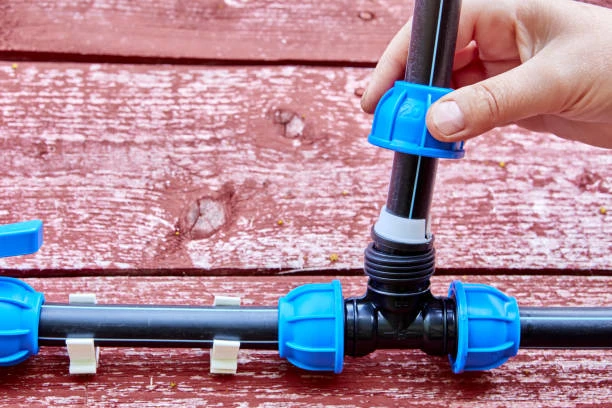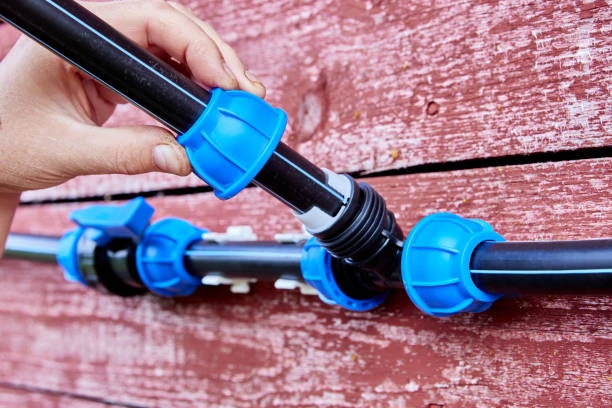Introduction
In recent years, the construction industry has been scrutinizing the environmental impact of various materials, particularly regarding their carbon footprints. A recent report has brought to light a significant finding: plastic pipe fittings boast a lower carbon footprint compared to traditional pipe materials like metal and concrete. This revelation not only sheds light on the environmental benefits of using plastic pipe fitting but also indicates a shift towards more sustainable practices in the industry. This article delves into the specifics of plastic pipe fitting, their carbon footprint, and the broader implications for the construction sector.
Understanding Plastic Pipe Fittings
What Are Plastic Pipe Fitting?
Plastic pipe fittings are essential components that connect different sections of piping in a wide range of applications, from plumbing systems in homes to larger industrial installations. Common materials for these fittings include:
- Polyvinyl Chloride (PVC): A widely used plastic known for its durability and cost-effectiveness.
- Polyethylene (PE): Flexible and resistant to impact, often used for water supply lines.
- Polypropylene (PP): Known for its chemical resistance and durability, ideal for industrial applications.
Why Choose Plastic Pipe Fitting?
Plastic pipe fitting offer several advantages over traditional materials, such as lower installation costs, resistance to corrosion, and a lighter weight that makes handling and transport easier. But the most significant advantage highlighted in the report is their lower carbon footprint.
The Carbon Footprint of Different Pipe Materials
Plastic vs. Metal Pipes
When comparing plastic to metal pipes, such as steel or copper, the differences in carbon footprint are stark. The production of metal pipes involves energy-intensive processes, including mining, refining, and smelting, which contribute to higher carbon emissions. For example, the extraction and processing of metals require significant fossil fuel use, resulting in a larger carbon footprint.
Plastic pipe fitting, on the other hand, are produced through less energy-intensive processes. The manufacturing techniques for plastics, such as extrusion and injection molding, are generally more efficient and consume less energy. This efficiency translates into reduced CO2 emissions during production.
Plastic vs. Concrete Pipes
Concrete pipes are commonly used in infrastructure projects but come with their own environmental challenges. The production of concrete is responsible for a significant amount of global CO2 emissions due to the energy-intensive process of making cement, a primary ingredient. Estimates suggest that cement production alone accounts for approximately 8% of global CO2 emissions.
In contrast, plastic pipe fitting not only require less energy to produce but also avoid the emissions associated with concrete manufacturing. This positions plastics as a more environmentally friendly option for piping solutions.
Lifecycle Analysis of Plastic Pipe Fittings
Production Stage
During the production stage, plastic pipe fitting generate fewer greenhouse gas emissions compared to metal and concrete pipes. The energy used in plastic manufacturing is significantly lower, which helps reduce overall emissions.
Transportation and Installation Stage
The lightweight nature of plastic fittings reduces transportation costs and emissions. Since they are easier to handle, they also lead to quicker and less energy-consuming installation processes. This efficient logistics model further decreases the overall carbon footprint.
Operational Stage
Plastic pipes are resistant to corrosion, meaning they can last longer without the need for frequent replacements. This longevity translates into reduced resource consumption and waste over time. Furthermore, fewer replacements mean less environmental impact associated with manufacturing new fittings.
End-of-Life Considerations
One of the significant advantages of plastic pipe fitting is their recyclability. Many plastic materials can be reprocessed into new products, helping to minimize waste and reduce the need for virgin materials. This recycling potential plays a critical role in the sustainability of plastic products.
Environmental Benefits of Plastic Pipe Fittings
Lower Energy Consumption
Plastic pipe fittings are produced using less energy, which directly contributes to lower carbon emissions during their lifecycle. This aspect is particularly important as industries strive to reduce their environmental impact.
Reduced CO2 Emissions During Production
The manufacturing process for plastic pipe fitting results in significantly fewer CO2 emissions compared to the production processes for metal and concrete pipes. This is a crucial factor for construction companies aiming to meet sustainability targets.
Recyclability of Plastic Materials
The ability to recycle plastic pipe fitting enhances their environmental appeal. By diverting waste from landfills and reusing materials, the industry can further reduce its carbon footprint.
Economic Advantages of Lower Carbon Footprint
The reduced carbon footprint of plastic pipe fitting does not just benefit the environment; it also translates into economic advantages. Lower energy consumption during production leads to reduced costs for manufacturers, which can then be passed on to consumers. Additionally, as demand for sustainable building materials grows, plastic pipe fitting position themselves favorably in the market.
Sustainability Trends in the Plastic Pipe Industry
Emerging Innovations
The plastic pipe industry is embracing sustainability with innovations like the use of recycled materials in production. Companies are increasingly focusing on eco-friendly manufacturing practices, ensuring that the carbon footprint continues to decrease.
Government Regulations and Standards
Many governments are implementing stricter regulations regarding carbon emissions in the construction industry. As a result, the demand for materials with lower carbon footprints, like plastic pipe fitting, is expected to rise.

Challenges in the Plastic Pipe Industry
Despite the benefits, the plastic pipe industry faces challenges, particularly regarding public perception. Concerns over plastic waste and pollution can impact the market. The industry must address these issues through effective recycling programs and education on the environmental advantages of using plastic materials.
Conclusion
The report highlighting the lower carbon footprint of plastic pipe fittings compared to traditional materials underscores the role of plastics in advancing sustainable practices in the construction industry. With their lower energy consumption, reduced emissions during production, and recyclability, plastic pipe fitting present a viable solution for those looking to minimize their environmental impact. As the industry evolves, embracing innovations and sustainable practices will ensure that plastic pipe fitting continue to play a crucial role in a greener future.
FAQs
- Why are plastic pipe fittings considered more environmentally friendly?
Plastic pipe fittings have a lower carbon footprint due to their energy-efficient production processes and recyclability compared to metal and concrete pipes. - What materials are commonly used in plastic pipe fittings?
Common materials include polyvinyl chloride (PVC), polyethylene (PE), and polypropylene (PP), each offering unique benefits for various applications. - How do plastic pipe fittings compare to metal pipes in terms of carbon footprint?
Plastic pipe fittings generally have a lower carbon footprint than metal pipes due to less energy-intensive production processes and lighter weight, reducing transportation emissions. - Can plastic pipe fittings be recycled?
Yes, many plastic pipe fittings can be recycled, helping to minimize waste and support a circular economy in the construction industry. - What economic advantages do plastic pipe fittings offer?
The lower carbon footprint of plastic pipe fittings results in reduced production and transportation costs, making them a cost-effective choice for builders and contractors.


















